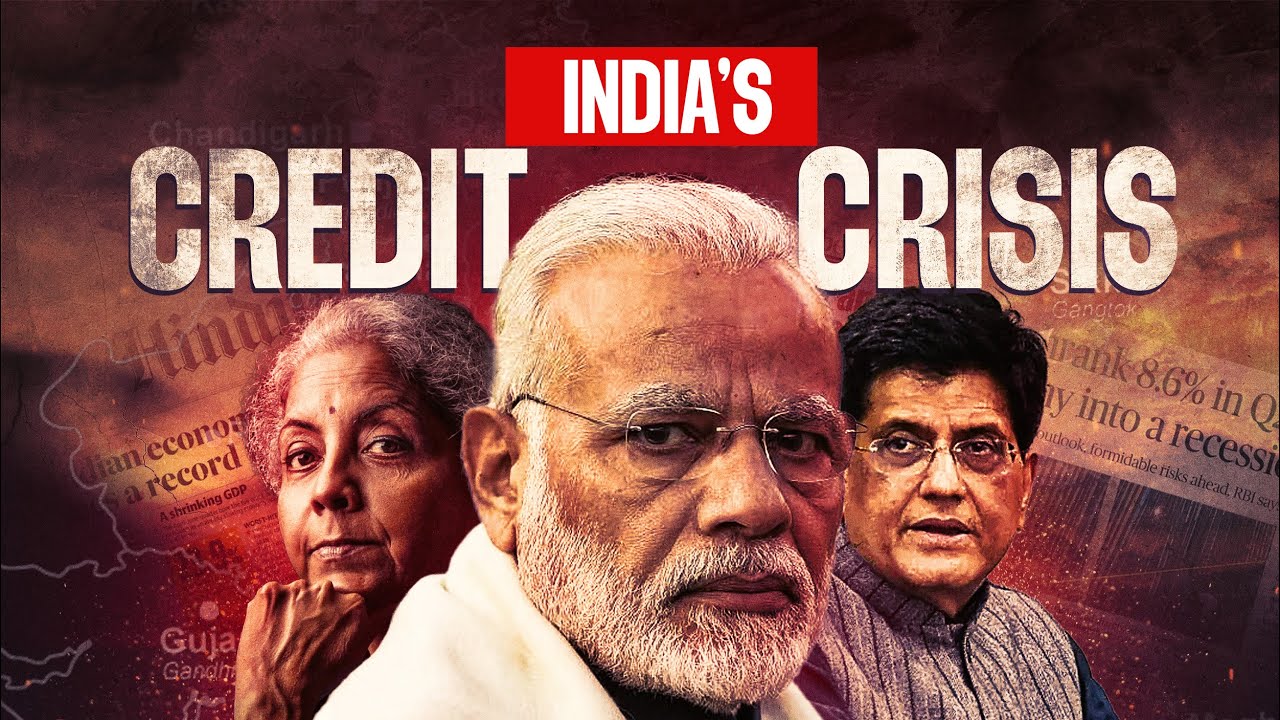Explained Economy: What latest GDP estimates tell about the state of India’s economy | Udit Misra
Summary
TLDRIndia's economic growth is facing a reality check as the government releases its first advanced estimates of GDP. While the nominal GDP stands at ₹324 trillion ($3.8 trillion), real GDP growth is projected at just 6.4%, and historically, growth has slowed significantly, particularly since 2019. The key engines of growth—private consumption, investment, and government spending—are all underperforming, indicating a troubling trend for job creation and prosperity. This sets the stage for the upcoming union budget, where key decisions will be made to address the economic slowdown and rising inflation.
Takeaways
- 😀 India's first Advanced GDP estimates project a nominal GDP of 324 trillion INR, equivalent to a $3.8 trillion economy based on the current exchange rate of 85 INR to 1 USD.
- 😀 Real GDP growth for the current financial year is estimated at 6.4%, but the long-term average growth rate since 2019 has been under 5% annually, well below the desired 9-10% growth for developed status.
- 😀 The Indian economy has faced slower growth over the past 5-6 years, with growth rates falling behind expectations despite strong recovery after COVID-19 disruptions.
- 😀 Nominal GDP projections have been revised downward over the past year, from 328 trillion INR in February 2024 to 324 trillion INR in the first Advanced estimates.
- 😀 Private consumption, which accounts for 60% of India's GDP, has grown at a weak pace of 4.8% annually since 2019, contributing to slow economic expansion.
- 😀 Business and government investments, which constitute 30% of India's GDP, are also growing slowly at just 5.3%, despite policy measures such as historic corporate tax cuts.
- 😀 Government spending, contributing around 10-11% to GDP, has grown at just 3.1% on average since 2019, further limiting economic momentum.
- 😀 The relatively slow growth in key engines of the economy (private consumption, investment, and government spending) has led to a lack of job creation and rising economic distress.
- 😀 Despite recent recovery post-COVID, the long-term trend of moderate growth signals a need for serious policy intervention to stimulate sustained economic progress.
- 😀 The upcoming union budget on February 1, 2025, is seen as critical for addressing economic challenges such as slow growth, high inflation, and low investment, with a focus on revitalizing the economy.
Q & A
What are the first Advanced estimates of India’s GDP, and why are they important?
-The first Advanced estimates of India’s GDP are forecasts made by the government about the country’s GDP at the end of the financial year. These estimates help project the size and growth of the economy and are based on existing data and trends from previous years, even though the financial year hasn't ended yet.
What is the difference between real GDP and nominal GDP?
-Real GDP is the measure of economic output that is adjusted for inflation, reflecting the actual volume of goods and services produced. Nominal GDP, on the other hand, includes the effects of inflation, showing the value of goods and services at current market prices.
How has India's real GDP growth been trending since 2019?
-India's real GDP growth has been under 5% annually since 2019, which is slower than the desired 9-10% growth needed for the country to become a developed economy.
What impact did the COVID-19 pandemic have on India's GDP growth?
-The COVID-19 pandemic caused a contraction in India's GDP in 2020-2021, which led to an apparent surge in GDP growth in the following years due to a statistical base effect. However, this growth is not sustainable, as long-term growth has been slower.
What is the largest contributor to India’s GDP growth?
-The largest contributor to India's GDP growth is private consumption, which accounts for 60% of the country's GDP. However, it has been growing at a slow pace of around 4.8% annually since 2019.
What has been the growth rate of business and government investments in India?
-Business and government investments, which together make up 30% of India’s GDP, have grown at a rate of 5.3% annually over the past 5-6 years. Despite efforts like corporate tax cuts, private sector investment has remained subdued.
Why is India’s real GDP growth slower than expected?
-India’s real GDP growth has been slower than expected due to weak private consumption, low investment rates, and subdued government spending, all of which are key drivers of economic growth.
What are the projections for India’s nominal GDP for this financial year?
-India’s nominal GDP is projected to reach 324 trillion rupees, which translates to approximately $3.8 trillion based on the current exchange rate. This is lower than previous estimates of 328 trillion and 326 trillion rupees.
How does the exchange rate impact the size of India’s economy in global terms?
-The exchange rate significantly affects the size of India's economy in global terms. At the current exchange rate of 85 rupees to the dollar, India’s economy is valued at $3.8 trillion. If the exchange rate were 61, as it was in 2014, India would have surpassed the $5 trillion mark.
What is the likely outcome if India continues with its current growth trajectory?
-If India continues with its current growth trajectory, it will struggle to create enough jobs and foster prosperity for its citizens. This slower growth could lead to economic distress and inequality, hindering efforts to become a developed economy.
Outlines

此内容仅限付费用户访问。 请升级后访问。
立即升级Mindmap

此内容仅限付费用户访问。 请升级后访问。
立即升级Keywords

此内容仅限付费用户访问。 请升级后访问。
立即升级Highlights

此内容仅限付费用户访问。 请升级后访问。
立即升级Transcripts

此内容仅限付费用户访问。 请升级后访问。
立即升级浏览更多相关视频

一口气了解全球经济形势

What’s the Role of Inflation in India’s GDP?

Why Can't India Build its Own DeepSeek or ChatGPT? | Vantage with Palki Sharma | N18G

Assoc. Prof. Muhammad Findi-Pertumbuhan Ekonomi

Why India has a POOR CREDIT RATING Despite being the fastest growing ECONOMY? : Detailed CaseStudy

Why India was called 'SONE KI CHIDIYA' and who DESTROYED Indian Economy in the Pre-1947 Era
5.0 / 5 (0 votes)
